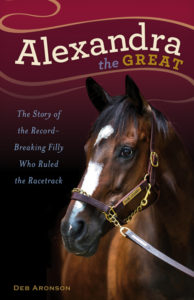The Emperor’s Ostrich, by Julie Berry (Roaring Brook Press), begins with a farmgirl looking for her runaway cow, and ends up as a story of growth, adventure and friendship. Tossed in with that set up is a touch of supernatural in the form of ancestor spirits, who appear to have put the story in motion and then rapidly lose control of it. The farmgirl, Begonia, just wants to retrieve her cow, Alfalfa. But Alfalfa wanders so far that Begonia must travel further from home than she’s ever been. Along the way she meets many characters and helps them solve their problems, makes new friends and saves the country from evil usurpers in the emperor’s court.
We also meet the soon-to-be emperor, a spoiled immature man-boy and his thousands of servants (Chief Fetcher of Afternoon Snacks, Second Assistant Cupbearer, Ladies of Imperial Ablutions, Imperial Cat Keeper, Keeper of the Imperial Aviary, Singers of Songs for the Evening Shift, you get the idea). First the almost-emperor decides that cats are bad luck (when “everyone knows” they are the opposite) and he bans all cats from the capital city. Then, a few days before he turns 22 and becomes the official emperor, he disappears, together with a single ostrich from the palace menagerie. These two story lines — the emperor and his ostrich, and Begonia and Alfalfa — converge in a hilarious way, each obstacle more silly than the next.
I will not give the rest of the story away, but I do love the author’s note before the story begins.
It reads, in part: “… to the students at Mindess Elementary School in Ashland, Massachusetts, for first leading me, on March 15, 2012, to
Emperor,
Ostrich,
and Ghoul.
And to the thousands of children who’ve brainstormed with me in creative-writing workshops ever since. To answer the question you frequently ask me, Yes, This really is how I write a story, and this one’s for you.”
Like Emperor’s Ostrich, the premise of The Adventures of a Girl Called Bicycle, by Christina Uss (Holiday House) is wonderfully ridiculous. The story also brings to mind Roald Dahl, though perhaps that is in part because the cover illustration of Bicycle, with her pointy nose and angular frame, makes me think of Dahl’s drawings. The story begins with a toddler, wearing a t-shirt with the picture of a bicycle and the word BICYCLE, appears on the doorstep of the Mostly Silent Monastery in Washington, DC. A Mostly Silent Monastery is full of monks dedicated to listening rather than talking. They do have “Sacred Eight Words:” yes, no, maybe, help, now, later, sleep and… sandwich. See what I mean? Wonderfully ridiculous! Sister Wanda a former Nearly Silent Nun runs the monastery and she can talk all she wants in order to run the place. Sister Wanda homeschools Bicycle, who is called that because it’s the only thing she’ll answer to. Sister Wanda uses the eight sacred words as a jumping off point for many lessons. Bicycle also becomes quite adept at making anagrams from the eight sacred words. When she is seven, Bicycle gets a bicycle and rides everywhere. She is happy and well-adjusted but Sister Wanda worries that she has no friends. Bicycle is happy reading, riding and hanging out at the monastery. But when Sister Wanda decides to send Bicycle to a camp called Friendship Factory and Bicycle learns that her bicycling hero, Zbigniew Sienkiewicz, will visit the United States for the first time the story changes gears. Bicycle must get from DC to California while staying one step ahead of Sister Wanda. Will she succeed? Bicycle has some amazing adventures and I was gratified to see that the author had, herself, ridden across the country because the book shows a deep understanding of that odyssey.



0 Comments